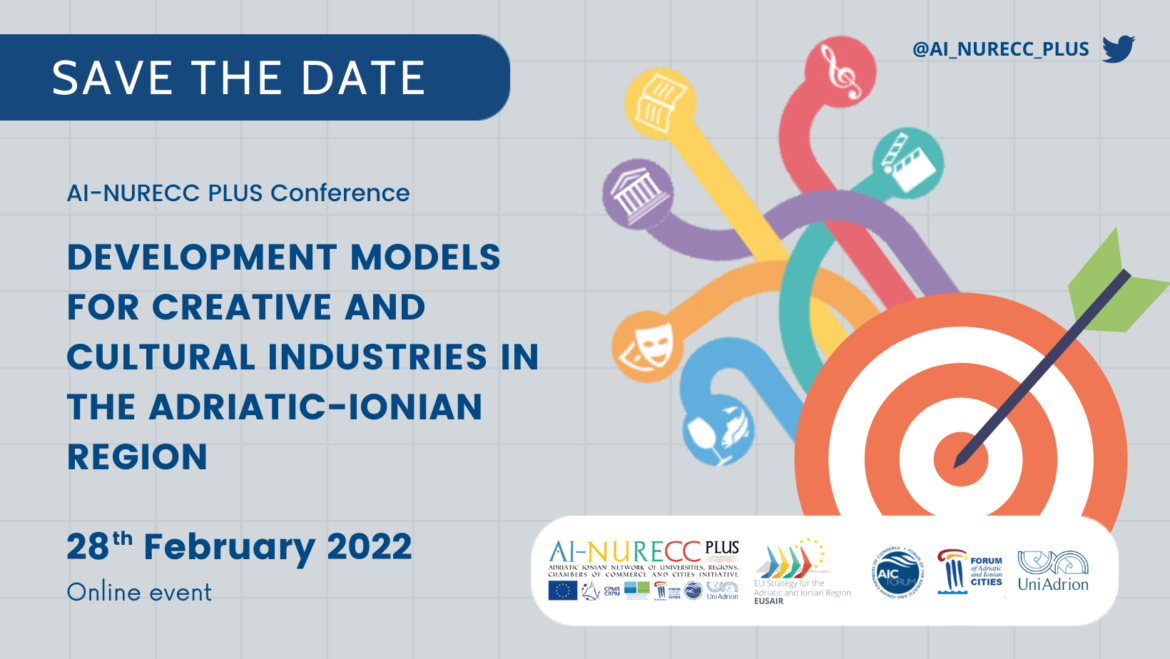WELCOME & INTRODUCTION: “THE EU STRATEGY FOR CULTURAL AND
CREATIVE INDUSTRIES – AI-NURECC PLUS AS A PLATFORM FOR
LOCAL-BASED STRATEGIES FOR THE ADRIATIC-IONIAN REGION”
Silvia Mangialardo, Head of International Relations Office at Marche Polytechnic University in Ancona (Italy) as well as Representative of UniAdrion, opened the welcome session presenting the AI-NURECC PLUS project, which is a preparatory action financed by DG REGIO of the European Commission. The project is coordinated by CPMR with the support of four partners from the area: the Adriatic Ionian Euroregion (AIE), the Forum of Adriatic and Ionian Cities (FAIC), the Forum of the Adriatic and Ionian Chambers of Commerce (FORUM AIC), and the Association of Universities of the Adriatic Ionian area (UniAdrion). This meeting, in line with the EU Strategy for the Adriatic and Ionian Region (EUSAIR) and the New European Bauhaus initiative, brings together public and private stakeholders from the whole Adriatic-Ionian region. The aim of this conference – the second of a series on the theme – is to map the variety of Creative and Cultural Industries (CCIs) in the region, to explore potential synergies and understand the added value of CCIs for the Adriatic-Ionian region.
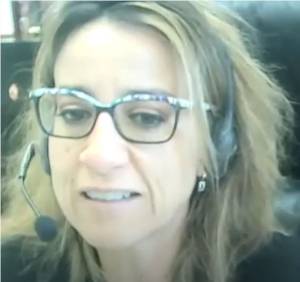
Mr. Joze Tomaš, President of the Forum of the Adriatic and Ionian Chambers of Commerce (Forum AIC) – AI-NURECC PLUS Partner, opened expressing his pleasure to participate in this second conference on the theme of Cultural and Creative Industries. During the first conference, held last December, we contextualized and started mapping the variety of Creative and Cultural Industries existing in the Adriatic and Ionian region, referring to the huge economic function of the industry, considered for its natural capacity to generate wealth and income.
Creative and Cultural industries have in fact the ability to develop a bottom-up type of approach to guide policies and strategies by listening to stakeholders who can contribute to boost economic growth and also improve the quality of life.
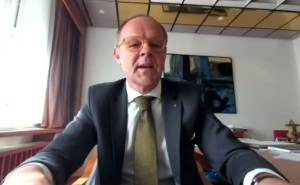
The aim of this second conference is to to go even further in the mapping process, by taking a look at the programmes that are in place to foster the capacity of CCIs and delineate possible development models for their economic growth.
The President of FORUM AIC strongly believes that the theme of CCIs is to be at the core of the AI-NURECC PLUS initiative, which has the objective of identifying and giving credit to the most important cultural and creative sectors in the area. The synergies between the AI-NURECC stakeholders are essential to ensure the development of Cultural and Creative Industries: from university training to the support of local and regional actors (just consider the experiences of the UNESCO cultural and creative cities) and also to the support of chambers of commerce and the economic -financial world.
 Mr. Ioannis Lolos, President of the Forum of Adriatic and Ionian Cities (FAIC) – AI-NURECC PLUS Partner opened saying that it is an honor for him to bring his greetings in this meeting on such important theme: the culture, that strengthen the European identity, creating a sense of belonging, promoting active citizenship and intercultural dialogue. In a framework of severe financial crises, Culture and creative industries can have the power to improve lives, transform communities, generate jobs and growth. Cities have an important role in this process, also recognized by the New European Agenda for Culture, in which the role of FAIC has been recognized: “Cities and regions are natural partners: at the forefront of culture-led development thanks to greater local autonomy, the attraction they exert on high-talent individuals, and their proximity to their inhabitants’ needs and potential. Culture and tourism are powerful drivers of economic activity. Cities that invest in culture can reap substantial rewards, attracting more jobs and human capital”. To turn opportunities into growth and jobs, cultural and creative enterprises and professionals need favorable framework conditions and a strategic approach: a better understanding of the market trends, a regulatory environment that rewards creation, better access to finance and opportunities to promote the cross-border mobility of professionals. This can be achieved by promoting innovative forms of multilevel cooperation and partnerships between the local authorities of the member countries.
Mr. Ioannis Lolos, President of the Forum of Adriatic and Ionian Cities (FAIC) – AI-NURECC PLUS Partner opened saying that it is an honor for him to bring his greetings in this meeting on such important theme: the culture, that strengthen the European identity, creating a sense of belonging, promoting active citizenship and intercultural dialogue. In a framework of severe financial crises, Culture and creative industries can have the power to improve lives, transform communities, generate jobs and growth. Cities have an important role in this process, also recognized by the New European Agenda for Culture, in which the role of FAIC has been recognized: “Cities and regions are natural partners: at the forefront of culture-led development thanks to greater local autonomy, the attraction they exert on high-talent individuals, and their proximity to their inhabitants’ needs and potential. Culture and tourism are powerful drivers of economic activity. Cities that invest in culture can reap substantial rewards, attracting more jobs and human capital”. To turn opportunities into growth and jobs, cultural and creative enterprises and professionals need favorable framework conditions and a strategic approach: a better understanding of the market trends, a regulatory environment that rewards creation, better access to finance and opportunities to promote the cross-border mobility of professionals. This can be achieved by promoting innovative forms of multilevel cooperation and partnerships between the local authorities of the member countries.
In this framework, also the link between cultural tourism and creative industries is clear: this is why we should involve even more the UNESCO creative cities. AINURECC Plus could act as a facilitator for the accession of the Cities of the EUSAIR countries in this Network.
Mr. Fatbardh Sallaku, President of the Association of Universities of the Adriatic-Ionian (UniAdrion) – AI-NURECC PLUS Partner: the conference, apart from being a time for knowledge exchange, is also a way to network, so he hopes and wishes everyone that the next one will be in person.
These events show that all our countries have the opportunity to collaborate for common priorities, such as Green Deal. The Green Deal calls us to collaborate for a more sustainable transformation of our economy and AI-NURECC can give a contribution in this direction: the project, which involves the public and private sector, the local authorities, the civil society, citizens, small and medium enterprises, deals with sustainable development and green economy. The partnership can be further enriched.

The conference offers an up-to-date overview of EU policies and programmes on culture and creativity, and wants to take into consideration the latest developments and trends at EU level. We aim at analyzing and comparing data; it is important to have a methodology to measure the cultural and creative industries that, According to Eurostat figures, employ 8.7 million people in the EU, equivalent to 3.8% of the total workforce in the EU, representing 1.2 million enterprises. This meeting will bring together different expertise and professionals in different fields who produced studies and this will allow to give a spinta to the development of Smart Specialization Strategies.
Mr. Stavros Kalognomos, Executive Secretary of the Balkan and Black Sea Commission (BBSC), Conference of Peripheral Maritime Regions (CPMR) – AI-NURECC PLUS Coordinator: he asks to the audience and participants to send their suggestions and ideas for the further revision of the EUSAIR Strategy in the field of the creative and cultural industries.
The next creative and cultural youth forum will be organized, in the framework of AI-NURECC, in May, in Tirana. A specific call for internships for supporting youth in cultural and creative interests will be launched.

Amb. Fabio Pigliapoco, Head of the Permanent Secretariat of the Adriatic Ionian Initiative: after giving his greetings, he recalled the special role of Albania in this year in which it is, until 30 May, the seat of the EUSAIR and AII chairmanship.
In the next future the occasions to meet will be a lot. The AII has always been on the side of AI-NURECC and they value the action of the project to foster cooperation and synergies in the area of the basin of the Adriatiac and Ionian sea. As far as culture and development is concerned, he invites the audience to the next events: the roundtable on natural parks on 29 on march and to the roundtable on culture that will be held in the margin of the forum concluding the albanian chairmanship, on 16th and 17th of May.

Ms. Barbara Gessler, Head of Unit Creative Europe – Culture, Education, Audiovisual and Culture Executive Agency, and representative of New European Bauhaus: Creative Europe is a new programme, the continuation of the programme that started in 2014 and lasted until 2020, and it has the biggest budget ever. We talk about more or less 2.5 billion euros, for the next 7 years. She strongly believes that this budget can be used to the very high benefit for all the people that will be able to benefit of Culture. Creative Europe is going much beyond the EU, because also the positive spillover of partnerships.
She wanted also to flag as a priority for Creative Europea future mobility scheme: geographical balance and therefore not only the cooperation of organizations, but also of individuals. In the next years there will be 21 million euros at our disposal for individuals, to travel across borders, to work on their projects and be involved in residenisnes in another country. Creative Europe is very much on partnership beyond borders, where organisations, that are facing similar challenges, will work together to exchange their experience and to make it better and to eventually come out more resilient out of this crisis and recover more quickly. A couple of years ago’s specific call in Western Balkans was highly successful and showed how cultural cooperation and the creation can also help regions thrive. Also the regions that access to a small partnership project will be highly co-funded by the European Union by up to eighty percent: so accessibility, geographical spread and equal possibilities of participation was at the forefront of the reflection when the program has been designed.
Today’s cross-cutting challenges require a really new forward-looking paradigm that takes advantage of collective thinking and knowledge. It’s possible to create beautiful sustainable and inclusive places, products and lifestyles in collaboration with all of society. The new European Bauhaus is a very good example of how we will connect different disciplines to provide such solutions. The aims is to bridge Research and Innovation with the Arts and Culture on topics such as climate neutral and smart cities, climate adaptation and resilience to make sure that the implemented solutions will not only be sustainable, but also accessible, affordable and enhancing the quality of experience.
Last year in September the commission adopted this communication on the concept of the New European Bauhaus with rich diversity of action such as collaborative processes, a pack of financial opportunities and a festival. The first edition of the New European Bauhaus festival will take place in Brussels from the 9th to the 12th of June with the possibility of organizing satellite events, both physical and virtual, in different member states.
There are numerous calls going on with different dimensions from education to culture, from research to innovation and they’re all published in the European Bauhaus website there’s a recent one the call for transformation of places of learning, which is an invitation to experts and thinkers, doers, ministers, students, educators and researchers to come together and make ways waves for beautiful sustainable and inclusive spaces. For the culture and creative sector there are several calls for example a dedicated call under Horizon Europe for shaping a greener and fairer way of life in the creative and inclusive societies through architectural, design and the arts. 
They also issued a report which is called “Towards a shared culture of Architecture. Investing and high-quality living environment for everyone”. They have been working together with member states on the Council conclusions on culture, high quality architecture and built environment as key elements of the new European Bauhaus initiative, which was adopted at the end of November last year, which calls on various policymakers at local and European level to mainstream the European Bauhaus and the circular economy principles and approaches in the national, social Economic and territorial development strategies.
To facilitate the synergies that she mentioned earlier, between relevant policy areas and other processes, she invites everyone to promote also these opportunities and the calls within the community to make the best use, also of the opportunities for and in favour of your culture and creative sector.
Mr. Konstantinos Tzamaloukas, Development Directorate of the Regional Unit of Ilia, Region of Western Greece, CPMR Member Region, Cultural and Creative Regional Ecosystems (CCRE-S3) Leading Region responsible for the coordination of the Adriatic-Ionian partners (Greece): the initiative he presents has been undertaken by the Regions of Western Greece along with the regions of Tuscany and Aragon. There is a thematic area within the smart specialization platform of the European committee. This idea was initially delivered from the first phase of AI-NURECC.
The transverse dimension of cultural and creative industries creates an important spillover effect, and there is cross-connectivity with several sectors of the economy. This is another proof of the importance of culture and the creative industries in total and the effect that they have in a horizontal and vertical way, in all aspects of the economy.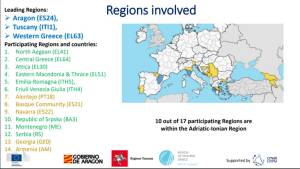
The approach that the project is following is based on three axes: a place-based, the ecosystem focused and the governance; and there are two major areas of work. The first one is the area of open innovation, which aims to develop co-investments projects, bringing together academia, research centers and business, to prepare business plans to attract public and private investors. The second area of work is the area for planning and building capacities.
In this area the project aima to share experiences in promoting CCI and defining joint plans for building capacities on CCI to contribute to territorial development. Each area has working groups, on which we can establish new cooperations , create new networks and, of course, create new partnerships in order to submit proposals for our funding especially in the view of the new programming period. They plan to deal with issues such as cross-innovation industrializing business, linkages with technology platforms, living labs.
All these subjects and the working groups are now subject of working and further expanding in order to create synergies and new partnerships and as a result to propose a new funding scheme. The culture and creative regional ecosystem thematic area can play an important role within the new European Bauhaus initiative. 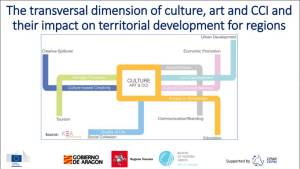
Therefore, Mr. Tzamaloukas says, “we hope that in the next months we will be able to submit new proposals, create new partnerships and of course they are always open to expand our network in more regions or in new stakeholders coming from the interested region”.
PANEL 1 “ROUNDTABLE: MAPPING CULTURAL AND CREATIVE INDUSTRIES
IN THE ADRIATIC AND IONIAN AREA”
According to Eurostat figures, cultural and creative industries employ 8.7 million people in the EU, equivalent to 3.8% of the total workforce in the EU, representing 1.2 million enterprises. This roundtable brings together experts in the field who have produced studies on the cultural and creative sectors at different levels (EU, macro-regional, national and regional). The common effort to illustrate, compare, assess and analyse available data represents a necessary step for the development of successful smart specialisation strategies and place-based development models for the Adriatic-Ionian area. Speakers will be asked to address the following questions: How do we measure and compare performances between different CCIs sectors and different countries? Are there any regional, national and macro-regional commonalities at a sectoral or macro-sectoral level? On what pillars should a macro-regional strategy focus to promote cultural and creative industries in the Adriatic-Ionian area?
This panel was moderated by Prof. Paolo Seri, Adjunct Professor of Territorial and Environmental Economics, Marche Polytechnic University (Italy) and Prof. Alessandro Crociata, Associate Professor of Applied Economics, Gran Sasso Science Institute (Italy).
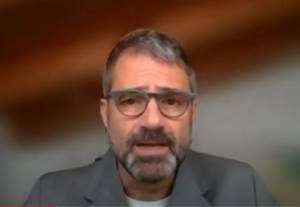 Prof. Seri explained that the session will find out and define possible developping trajectories and build operating practices as regards the CCI sector in the Adriatic and Ionian Region (AIR). The speakers invited during this panel will show a “mapping process” of the cultural and creative industries of the AIR; Prof. Seri underlined that the “mapping process” is referring to the fact that we do not need a simple list of data existing or a starting pictures, but the mapping process has a functional aspect, the way we map is functional to the development models which we will go through. Prof. Seri analyzed the available EUROSTAT data and pointed out that the countries within the macroregion produced wider varians then western and continental countries: in term of employment, share addedd value, total addedd value of the CCI sector. He noticed that the real harmonization of cultural statistics is far to be reached. The most striking divergencies are likely due to the differencies in naming and interpreting phenomena before they are counted.
Prof. Seri explained that the session will find out and define possible developping trajectories and build operating practices as regards the CCI sector in the Adriatic and Ionian Region (AIR). The speakers invited during this panel will show a “mapping process” of the cultural and creative industries of the AIR; Prof. Seri underlined that the “mapping process” is referring to the fact that we do not need a simple list of data existing or a starting pictures, but the mapping process has a functional aspect, the way we map is functional to the development models which we will go through. Prof. Seri analyzed the available EUROSTAT data and pointed out that the countries within the macroregion produced wider varians then western and continental countries: in term of employment, share addedd value, total addedd value of the CCI sector. He noticed that the real harmonization of cultural statistics is far to be reached. The most striking divergencies are likely due to the differencies in naming and interpreting phenomena before they are counted.
Prof. Seri invited the participants and all the people interested in a “Call for paper” for an italian review called “L’Industria” on the same topic of the Conference “the CCI sector in the Adriatic Ionian Region”.
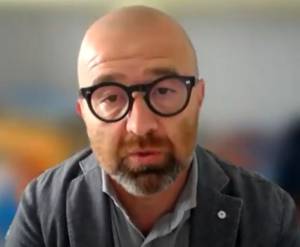 Prof. Crociata is leading a working package of an Horizon2020 project called “DISCE – Developing inclusive and sustainable creative economies”. The goal of the WP deals with the CCIs identification mapping and statistics. He pointed out that there’s a need to advance a comprehensive understanding of CCIs to unlock the potential of CCIs in Europe. The role and the importance of CCI sector is an evidence but not only for cultural and creativity, not only for cultural sector, but also for the whole economies. What we know is that the perimeter of CCI is very difficult to map; the CCI sector is led by national specific culture and also by national specific policy imperatives, but if we look at the european level and if we understand the potential to catch the european agenda, we have to better reflect on how to talk each other and so how to harmonize the perimeter, the mapping and the statistics of CCI sector.
Prof. Crociata is leading a working package of an Horizon2020 project called “DISCE – Developing inclusive and sustainable creative economies”. The goal of the WP deals with the CCIs identification mapping and statistics. He pointed out that there’s a need to advance a comprehensive understanding of CCIs to unlock the potential of CCIs in Europe. The role and the importance of CCI sector is an evidence but not only for cultural and creativity, not only for cultural sector, but also for the whole economies. What we know is that the perimeter of CCI is very difficult to map; the CCI sector is led by national specific culture and also by national specific policy imperatives, but if we look at the european level and if we understand the potential to catch the european agenda, we have to better reflect on how to talk each other and so how to harmonize the perimeter, the mapping and the statistics of CCI sector.
Ms. Elkjana Gjipali, Visiting Lector at Aleksander Moisiu University of Durrës (ALBANIA) showed some data on the CCI in Albania. Creative Industry, based on the 2013 UNDP report, contributes to the economy for: create employment opportunities and income; generate revenue for the fiscal system at local and national level; attract qualified experts; support tourism and cultural heritage; increase the value of the property; increase socialization within the urban area of the city and promote tolerance and support of different ideas. However, some challenges of this sector are related especially to the gap that exists between public institutions and businesses in this sector, which appears mainly in terms of supporting new and existing initiatives. Other problematic aspects highlighted by the report are: access to finance; taxation same with other more profiting industries, so it makes it difficult for sector to grow; lack of  professional schools on a managerial level for the sector, (we have artists and creators but not art managers/agents); not supporting of networking events between the creative sector and other Industries; lack of incentives in creating partnerships; lack of capacity to receive EU support funds (the government needs to invest more in capacity building to apply for EU funds, to help the partnerships with other countries and also for project implementation; with and exception for the publishing in houses that are a success story all the other industries haven’t succeeded in accessing EU funds. One of the main problems faced by the subject of creative industries that we can emphasize is the lack of spaces with reasonable prices and appropriate technology which will inspire and support this sector to create an elaborate their ideas. I think government should help and enable creators together in places where there is equipment and workspace from where they can develop by collaborating also with each other. Creative industry in Albania remains a new notion for the country. There are no genuine studies that given overview of this category, the contribution it makes to the economy such as contribution to GDP, employment, promotion, innovation, etc. Since 2019, Ministry of Culture is in the process of building indicators that measure the contribution of culture in development, but data has not yet come up with findings. We don’t have the data yet. That information is still not published. The British Counsil in Albania conducted the study in 2007 on the identification and categorization of the creative industry that exists in the country, in identifying capacities, needs, problems and impact on the economic and social development. The number of businesses focused on the sector, part of the creative industry is 515, representing about 0,57% of the total business’s national wide of these businesses. 197 are headquartered in the metropolitan area of Tirana and Durres.
professional schools on a managerial level for the sector, (we have artists and creators but not art managers/agents); not supporting of networking events between the creative sector and other Industries; lack of incentives in creating partnerships; lack of capacity to receive EU support funds (the government needs to invest more in capacity building to apply for EU funds, to help the partnerships with other countries and also for project implementation; with and exception for the publishing in houses that are a success story all the other industries haven’t succeeded in accessing EU funds. One of the main problems faced by the subject of creative industries that we can emphasize is the lack of spaces with reasonable prices and appropriate technology which will inspire and support this sector to create an elaborate their ideas. I think government should help and enable creators together in places where there is equipment and workspace from where they can develop by collaborating also with each other. Creative industry in Albania remains a new notion for the country. There are no genuine studies that given overview of this category, the contribution it makes to the economy such as contribution to GDP, employment, promotion, innovation, etc. Since 2019, Ministry of Culture is in the process of building indicators that measure the contribution of culture in development, but data has not yet come up with findings. We don’t have the data yet. That information is still not published. The British Counsil in Albania conducted the study in 2007 on the identification and categorization of the creative industry that exists in the country, in identifying capacities, needs, problems and impact on the economic and social development. The number of businesses focused on the sector, part of the creative industry is 515, representing about 0,57% of the total business’s national wide of these businesses. 197 are headquartered in the metropolitan area of Tirana and Durres.
 Mr. Fabio Renzi, Secretary General of Fondazione Symbola (Italy) started its presentation talking about the publication of 11 reports called “Io sono Cultura”, which are annual reports of the association Symbola carried out in collaboration with Unioncamere, based on the data of the Register of Companies and implemented with the data of the national statistic. The only study in Italy that annually quantifies the weight of national culture and creativity in the economy. The numbers undoubtedly demonstrate that culture is one of the driving forces of the Italian economy, one of the factors that most enhance the quality and competitiveness of Made in Italy. The reports collected data on the returns of the role of culture and of creativity in the national economy, it makes data on value available added, employment and businesses of the SPCC (Sistema Produttivo creativo e culturale), highlight the capacity multiplicative of the system Cultural and Creative Productive on the rest of the economy, analyze the main ones characteristics of employment cultural and creative offers a statistical framework detail of the role of culture in the territories, collects insights thematic / sectoral (23) and case stories (over 200). What is the creative and cultural productive system? The report analyzes the Cultural and Creative Production System, i.e. all those activities economic activities that produce cultural goods and services, but also all those activities that do not produce strictly cultural goods or services, but which use culture as an input to increase value symbolic of the products, therefore their competitiveness, which in the study we define creative-driven. The cultural production system is divided in “Core Cultura” divided in 7 macro-domains: Architecture and design, Communication, Audiovisual and music, Video games and software, Publishing and printing, Performing arts and visual arts, Historical and artistic heritage; and in “Creative Driven”, meta-sector composed of active cultural and creative professionals with duties cultural and creative in non-cultural sectors.
Mr. Fabio Renzi, Secretary General of Fondazione Symbola (Italy) started its presentation talking about the publication of 11 reports called “Io sono Cultura”, which are annual reports of the association Symbola carried out in collaboration with Unioncamere, based on the data of the Register of Companies and implemented with the data of the national statistic. The only study in Italy that annually quantifies the weight of national culture and creativity in the economy. The numbers undoubtedly demonstrate that culture is one of the driving forces of the Italian economy, one of the factors that most enhance the quality and competitiveness of Made in Italy. The reports collected data on the returns of the role of culture and of creativity in the national economy, it makes data on value available added, employment and businesses of the SPCC (Sistema Produttivo creativo e culturale), highlight the capacity multiplicative of the system Cultural and Creative Productive on the rest of the economy, analyze the main ones characteristics of employment cultural and creative offers a statistical framework detail of the role of culture in the territories, collects insights thematic / sectoral (23) and case stories (over 200). What is the creative and cultural productive system? The report analyzes the Cultural and Creative Production System, i.e. all those activities economic activities that produce cultural goods and services, but also all those activities that do not produce strictly cultural goods or services, but which use culture as an input to increase value symbolic of the products, therefore their competitiveness, which in the study we define creative-driven. The cultural production system is divided in “Core Cultura” divided in 7 macro-domains: Architecture and design, Communication, Audiovisual and music, Video games and software, Publishing and printing, Performing arts and visual arts, Historical and artistic heritage; and in “Creative Driven”, meta-sector composed of active cultural and creative professionals with duties cultural and creative in non-cultural sectors.
Mr. Ioannis Poulios, Lecturer at the Hellenic Open University and Strategist in Living Heritage, Tourism and Business (Greece) will introduce the CCI environment in Greece. First of all he wanted to pointed out that from 2008 Greece has experienced a global crisis and from 2020 also a pandemic crisis came out.
In Greece there is a huge emphasis on the (Classical) heritage sites and museums at the expense of the other CCI. And, both theoretically and practically, separation between heritage-museums and contemporary cultural forms. This for two key reasons: for political reasons and because of the strong connection of (Classical) sites/museums to tourism. This phenomenon has been enhanced during the economic crisis. On the part of the private sector /entrepreneurs: a lot of entrepreneurs (mostly younger people) got involved in the tourism industry. The situation of contemporary CCIs in Greece showned that the so-called traditional crafts (shoe-making, jewellery etc.) are increasingly out of the market. In some (rather a few) cases, they have managed to connect to the tourism industry. As regards the theatre, music, films etc.: standard, but with problems: too many – increased competition on a local level; and hit by coronavirus crisis. Despite their attempts, they did not find a sustainable response to the coronavirus crisis. During the pandemic period, they were supported by the state (funding) – but this was temporary. As regards the architecture: standard, affected by real estate developments. Video games, Greek cinema, design: increase, because of digital technologies. Some problems related to the CCI sector in Greece: high rate of unemployment or limited employment, yet in elastic/informal forms such as freelancers, project-based; difficult to map them (also because of these elastic/informal forms of employment); many small companies/individuals – increased competition; operating mainly in Athens, and not in other local areas – increased competition mostly in Athens; clustering; working together, sharing offices; very good professionals in their technical field, but lacking sufficient business knowledge; lacking long-term strategic vision; heavily emphasising on marketing especially through social media (yet not based on a long-term strategic vision) – temporary gains; digitisation; a rather introverted approach: not sufficient international collaborations; a problem with copyright issues. Mr. Poulios pointed out some suggestions to improve the CCI environment in Greece, in the public and private sector. As regards the public sector: link contemporary cultural forms with heritage sites/museums and tourism on areas outside Athens; provide business knowledge to CCIs: better through online sessions; support CCI professionals with copyright issues; develop code of ethics regarding equality, ‘me too’ etc. As regards the private sector: linking contemporary cultural forms to tourism: development of alternative tours such as food, graffiti; CCI professionals should better partner with business professionals (and rather not with other CCI professionals); address AI – develop capacities that will not be affected by AI and the coming of the robots; develop regional and international cooperations (e.g. on issues of shared interest such as the Mediterranean Diet).
Ms. Dragana Radevic, Director of Institute for Entrepreneurship and Economic Development of Montenegro underlined that the cultural and creative industries in Montenegro are in a nascent phase but they are recognized as potential, aimed at generating income or profits and creating jobs, which contributes to sustainable development at local and national level. The assessment of the economic effects of the cultural and creative industries in Montenegro has led to the conclusion that the CCIs in Montenegro are below their potential and are lagging behind in comparison with other countries. 
Mapping of the cultural and creative industries in Montenegro was part of the activities of the project ‘Cultural and Creative Industries as a Sustainable Economic Sector in Montenegro’, supported by the UNESCO International Fund for Cultural Diversity, implemented by the Institute for Entrepreneurship and Economic Development (IPER). The aim of the project was to support the development of the cultural and creative industries (CCI) in Montenegro through: mapping the CCI in Montenegro and identifying their potential to strengthen local and regional development, identifying and promoting successful entrepreneurship stories in the CCI to gather lessons learned and establish a general and strategic framework for their further development, encouraging the development of entrepreneurial skills in the sector and raising awareness of the CCI potential for social and economic development in Montenegro.
The mapping process and assessment of contributions have identified some weaknesses regarding monitoring of statistics by institutions, so it is necessary to work on their removal for the purpose of future monitoring and more accurate assessment. Also, the cultural and creative industries are most susceptible to change, influenced by the development of new technologies, changing their form and it is very difficult to classify because they are intertwined with other sectors. As the classifications do not represent a static category, the content of the CCI needs to be revised from time to time and adjusted for new developments. The limitations can be overcome by occasionally conducting specialized, methodologically well-designed research on the sample, where the extrapolation of the results obtained could characterize the sectors individually, but also the CCI as a whole. Considering that the CCIs are not recognized as a single sector, there is no single institutional and strategic framework governing this area, but the responsibilities for design and development are divided according to which particular activities they belong to. The foregoing points to the need for cross-sectoral cooperation in the cultural and creative industries.
As part of the note when calculating the contribution of culture to the GDP of Montenegro, it is emphasized that it is necessary to improve the data at the national level and to classify activities at the four-digit classification level, bearing in mind that the statistics are available only on the two-digit naw and that as such do not represent a precise basis to evaluate the contribution of culture. In this way, certain activities were not covered, which ultimately led to a possible underestimation of the sector’s contribution. Also, in terms of employment, it was stated that it is necessary to improve statistics in order to ensure classification by the basic socio-economic characteristics of employees. Based on the analysis of documents and available statistics, an activity based approach was selected. An activity-based approach allows for the measuring of economic effects of CCIs, such as employment and participation in GDP.
Ms. Hristina Mikic, Head of Research & Development, Institute for Creative Entrepreneurship and Innovation (Serbia) pointed out that the CCIs are not well-accepted in Serbia as a concept that is friendly to our culture and structure of the cultural sector. It is very often used to denote the negative trend of imposing economic success as a norm for the quality of cultural activities, creative work and their outcomes. As emerging concept there is the Creative Entrepreneurship. CCIs, in 2018, registered 24,289 business entities (enterprises and entrepreneurs), including 8,001 enterprises, 16,088 entrepreneurs and 510 public institutions.

CCIs sector is predominantly composed of small and micro enterprises (23.8 percent of the total) and entrepreneurs (67.5 percent). Large number of micro organizations with less than 3 employees. There is a high level of sectoral fragmentation in CIs compared to the national economy.
- CCIs % of total GVA 3.91%
- CCIs % of total GDP 3.76%
- CCIs % of total employment is 3,35%.
- Employment in CCIs is quite specific. This sector mainly employs highly educated workers on a temporary basis (about 15 % of total employment) and a huge number of part-time workers or freelancers on a project basis.
- More than half of those employed are highly educated people, which indicates that there is a strong cultural capital within these industries. Also, noteworthy is the fact that less than 1 % of all employees in CCIs are the unqualified and low-skilled workforce. Compared to the whole economy where their share is approximately 20 %.
The concentration of employment is proportional to the market share of leading companies in several branches. For instance, the top-ranking media companies employ approximately 55.6 percent of employed persons in the branch; in the film industry, the first three firms accounted for 75% of total employment in the branch.
There are two development models in CCIs: one, representing companies that are outsourced by large foreign companies, and the other where work is based on authenticity and originality of author`s expressions. The first group of companies achieves high rates of growth and employment but does not create goods protected by intellectual property rights, nor those that have symbolic, cultural, or artistic value. These companies provide services to the global CCIs companies. Most of them are in the film industry, advertising, IT industry, animation, etc. The second group of CCIs operators is much more important for Serbia’s creative identity, diversity, and sustainability of cultural expressions and values. They are mostly made up of small creative companies, creative entrepreneurs, and associations that create contents of original character and authentic authors’ expression.
Data about CCIs are not being collected regularly and in continuity, and they mainly come from occasional projects. Therefore, we have different studies and approaches to data collection which are mutually incomparable. We are missing quality data about creative entrepreneurs, craftsmen, and new digital services (e.g., AR or VR studios with cultural content). Since 2017. collected data are not used to provide an objective insight into the development of CCIs, but are filtered to show only positive results and an embellished picture of the CCIs development (if they are published by public government bodies or government consultants in the form of communications or policy papers). The most cost-effective approach to data collection is the one based on administrative databases, but such an approach is disabled by the ineffective strategy of open data government.
On the level of policy, CCIs are often wrongly understood as IT industry or, sometimes, as entertainment industry, and that affects inefficient public policies measures. Based on such understanding, decision-makers are bringing measures directed toward economic growth, scaling and fast (but not necessarily sustainable) results. The measures that are being brought are trying, in an aggressive way, to change the business models in CCIs in order to enable them to scale up in economic terms, without investments in creativity, excellence, and promotion of diversity of cultural expressions.
“Hype development of creative industries“ syndrome can be noticed. Different means of promotion and numerous conferences are used to boost enthusiasm for the economic growth of CCIs which can be seen as a form of political populism (e.g., the gaming industry in Serbia is often presented as a global leader although there are numerous boutique companies whose share in the global market is negligible).
The gap between certain measures of public policies and practical needs of the CCIs as a sector results in the so-called unfriendly business environment (so call „predatory business environment“and disrupted institutional norms) and precarious work. With different measures, the government is creating an unfavorable business environment for entrepreneurs, freelance artists, and independent initiatives, the creative class that works on the jobs which are not seen as a priority in “scaling of economic growth”. The results of that are monopolies in certain CCIs branches (e.g., in the music industry, concert industry), lesser possibilities for the development of creative entrepreneurship, and the cases where the fiscal burden for creative entrepreneurs, micro-companies, and freelance artists, is bigger than the burden for big corporations.
There is a big discrepancy in legal regulations for business activities in CCIs and such regulations are not subject to serious work. Fiscal and other measures that are being promoted as support to CCIs are accessible only to the small number of big companies, while the majority of other companies and entrepreneurs cannot use them due to the high financial thresholds that have to be reached as a precondition for the usage of those incentives.
Numerous measures from the communist and socialist periods are still kept. They are limiting the development of the private sector, entrepreneurship, increasing bureaucracy, and worsening the conditions for innovations and excellence in CCIs.
Ms. Anja Zorko, Head of the Centre for Creativity of Slovenia (Slovenia) started its presentation talking about the Centre For Creativity that in Slovenia, launched the first extensive research analysis of the creative sector in Slovenia called – Statistical Analysis of the Situation of the Cultural and Creative Sector in Slovenia 2008–2017. Analysis included 35,212 individuals working in creative professions and 24,062 registered organizational units in the field of activities in CCS. Extensive analysis provides insight into the dimension and potential of the sector and provides a basis for further research and policy recommendations in the field of CCS in Slovenia.

Ms. Anja Zorko will provide some data: in general creative economy employs 7% of all employees in Slovenia. CCS in the entire economy of Slovenia occupies 10.5% of all registered organizational units, and among economic entities it includes 8.4% all active companies in the Slovenian economy. In 2017, the entire CCS in Slovenia generated EUR 2,964,164,438.53 sales revenue. This is 2.7% of revenues generated in the entire Slovenian economy. CCS generated more revenue than the chemical industry, and at the same time the share is comparable to the revenue generated by the electrical appliance industry this year. Companies operating in CCS contributed 3.5% to the total gross value added (GVA) in Slovenia. GVA per employee in CCS amounted to EUR 45,527 and was higher than the average of the economy (EUR 43,210). 4.7% of all employees in Slovenia are employed in creative professions. If we add other (support) professions that are employed in CCS to the creative professions (employees in CCS and outside CCS), we find that the power on the part of CCS is even greater – in the so-called creative economy there are as many as 51,934 individuals employed in Slovenia. , this is 7% of all employees. In the Slovenian economy, the cultural and creative sector accounts for 10.5% (24,062) of all registered organizational units and is comparable in number to construction. In terms of employment, compared to all industries in Slovenia, CCS occupies approximately the same share as the production of electrical appliances and financial and insurance activities, and at the same time a larger share than the chemical and automotive industries. In the term of growth in the field of CCS, the software and games industry and the profession of software developer stand out. Since 2008, the number of units in the industry has doubled, and the number of software developers has almost doubled. The software and games industry also has the largest share of companies with more than 10 employees (7%).
Share of registered organizational units in individual branches of CCS, 2017 – 16% Software and games; 10% Advertising; 10% Design and visual arts; 9% Architecture; 5% Video and film; 4% Cultural and artistic education; 1% Music; 1% Radio and television; 3% Archives, libraries and cultural heritage.
One of the main characteristics of CCS companies is their small size. 97% of companies from CCS in Slovenia employ up to 9 employees, while 80% of companies employ only 1 person.
The structure by legal organizational forms shows that in Slovenia the field of CCS is dominated by independent entrepreneurs and limited liability companies. The share of sole proprietors in the field of CCS is 56% is more than in the rest of the economy, where this share is 43%. As well as a significant share is occupied by the self-employed in culture (12%).
In order to provide a comprehensive data tor the Statistical Analysis of the Situation of the Cultural and Creative Sector in Slovenia 2008–2017 in 2018, the Institute for Economic Research (IER), commissioned by the Centre for Creativity, requested access to 3 different databases
- the Statistical Office of the Republic of Slovenia (Slo – SURS):
- the Register of Employment (Slo – SRDAP),
- the Statistical Business Register Slovenia (Slo – SPRS) and microdatabases from final company accounts.
The combination of data from all 3 databases and different methodological approaches enabled an in-depth assessment of the scope of the cultural and creative sector (CCS) in Slovenia: creative and reverse intensities,
the structure of CCS according to professions and industries, trends and regional distribution of CCS in Slovenia and partly also comparison of results with the EU. The results of the analysis of individual databases are presented in more detail in individual chapters of the monography Statistical Analysis of the Situation of the Cultural and Creative Sector in Slovenia 2008–2017.
Arguments about the importance of CCS are further supported by the merging of professional and industry views on the scope of CCS. From this point of view, the methodology of the creative trident is important (Higgs et al., 2005, NESTA, 2013a), according to which the assessment of the CCS oz. employment in the creative economy take into account all three groups: those in the CCS employees in creative professions (specialists), those who are employed in CCS in other professions (support), and also those who are employed in other professions in creative professions (built-in).
Ms. Violeta Simjanovska, Head of Arts Management Department, Sibelius Academy, UNIARTS in Helsinki (Expert from North Macedonia). The neoliberal concept of CCI sector was introduced quite late in North Macedonia compared to other countries. The first mapping, as a first step of development of this sector, was proposed by the Ministry of Culture (Mapping of Creative Industries) in 2009, in collaboration with the British Council. The strategy for the development of this sector was initiated afterwards, however, it was never developed fully. The sector was only recognised as a potential, not only for the cultural sector, but also as a generator for economic growth. However, the explicit cultural policy instruments in this area have not been well developed yet. According to the World Bank data catalogue (2020), there are approximately 2,083,380 inhabitants in 2021, with 58% of the population living in urban areas. Nowadays, the Republic of North Macedonia has an open economy that integrates into international trade, with a total trade-to-GDP ratio of 129% and Gross national expenditure in millions of Euros (2020) of 12,2. 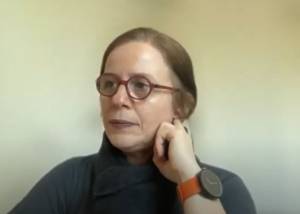
The cultural and creative industries are difficult to classify and measure because they are interconnected with other sectors. The classification depends of the understanding of the CCI sector. Given the multi-dimensional nature of culture, statisticians use various methodologies (for example, differences in data between EUROSTAT and MAKSTAT), which reflect on the classifications that are specific to statistical areas. For instance, when analysing cultural employment, the sectors are classified in a different manner (in some data employment and occupations); for trade statistics, goods and services classifications are used; cultural participation is surveyed using a list of culture-specific activities. The ‘practical’ coverage of culture statistics differ from the theoretical scope and vary between statistical domains.
PANEL 2 “ROUNDTABLE: “CULTURAL AND CREATIVE EXPERIENCES FOR
LOCAL COMMUNITIES”
Ms. Ivana Nikolić Popović, Member of the Croatian Cluster of Creative and Cultural Industries and representative of Project Ilica: Q’ART (Croatia): Ivana presented briefly her project: Q’ART deals with the transformation of abandoned public spaces in the core of Zagreb, the spaces scattered on the main street of the city – Ilica. 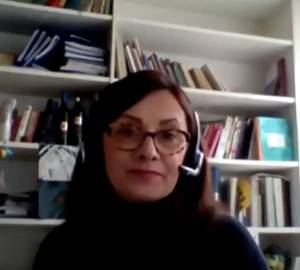
Cities have the same problem: dying of historical city center. The goal of the project is a long-term change of the urban experience through social activities of artists, associations, universities, trades and citizens of the community.
The project is based on sustainable future and activities, focusing on different CCIs (Architecture, audio-visual art, music, performative art, literature, visual arts, applied art and crafts) and on recycling too (second hand fashion show).
The target group are artists but also resident and students of this parts of Zagreb. After five years of research and development of participatory management models in the sphere of culture, the project continues to develop as a community art project. According to this, the community takes on the main role in the communications of the project.
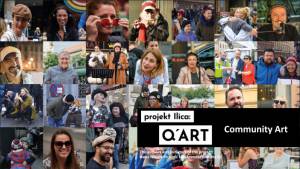
 Mr. Giovanni Seneca, Artistic Director of the Adriatico Mediterraneo Festival (Italy): the Festival was born in 2006 when the Marche region, engaged in a project to build a hospital in Bosnia, asked for artistic interventions in Sarajevo. Hence the idea of a festival based on cooperation. Since 2007, therefore, this festival has been successfully repeated in the public spaces of the city of Ancona (strategic for its position on the Adriatic), and is based both on music and meetings, to understand also the political context of these countries. Everything is explored with the curiosity of finding the threads that unite peoples and cultures, rather than the fractures that separate them. It is therefore a container that welcomes ideas related to the sea and trade. Subsequently, there were collaborations with European projects, also favouring exchanges between artists. So many synergies have been created, including musical ones.
Mr. Giovanni Seneca, Artistic Director of the Adriatico Mediterraneo Festival (Italy): the Festival was born in 2006 when the Marche region, engaged in a project to build a hospital in Bosnia, asked for artistic interventions in Sarajevo. Hence the idea of a festival based on cooperation. Since 2007, therefore, this festival has been successfully repeated in the public spaces of the city of Ancona (strategic for its position on the Adriatic), and is based both on music and meetings, to understand also the political context of these countries. Everything is explored with the curiosity of finding the threads that unite peoples and cultures, rather than the fractures that separate them. It is therefore a container that welcomes ideas related to the sea and trade. Subsequently, there were collaborations with European projects, also favouring exchanges between artists. So many synergies have been created, including musical ones.
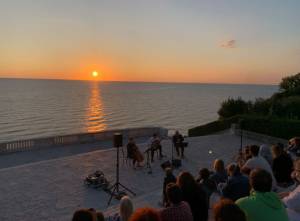
Ms. Renata Zamida, ROG Centre – Creative Hub (Slovenia): the General Acting Director for a new creative hub in Ljubljana, Slovenia, speaks about the project, that consisted firstly in the renovation of an old bicycle factory, one of the most important piecse of industrial heritage of the 20th century in Ljubljana. After the renovation it will be a production facility of almost 9000 square meters updated for the 21st century.

The Rog center creative hub will be mostly used as a production space, a space to meet, a space to exchange in the field of creative industries and focus on manufacturing, urban craft, and design architecture.
In 2018 the Roglab team received the Euro cities network innovation award for the development of the Rog center. The development process involved more than 400 experts, more than 80 partner organizations and more than 6000 individual users, past or future who have then refined the vision of the new Rog center.
they tried to make this creative hub bottom up, with exchange, with the community. The founder and funder of Center Rog is the City of Ljubljana so it is a municipality creative created center, but they really succeeded in this ongoing hands-on participatory process that involved the closest communities, that will gain from the center but also the whole neighborhood. The space is placed quite centrally in the city, so they collaborated with possible partners and try to answer to the needs of the community and research the best business models to manage and give it a long lifetime possibility as a public space.
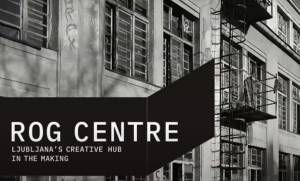
Mr. Genci Kojdheli, General Director of Strategic Projects and Foreign Investments at the Municipality of Tirana (Albania): Mr. Genci Kojdheli spoke about Tirana’s engagement as the current European Youth Capital and how the city will benefit from this in terms of involving youth into the core activities of the municipality and of the city.
They started the project of Youth capital in the 2019, looking to be as inclusive as possible in order to come up with a program that was youth, driven and created by youth. The municipality attempted to stay as distant as possible in terms of content creation, this was the key to success. 
They collaborated closely with a national youth congress and managed to finalize a big offer that focused on some key areas for the young people, including creative economy and culture of innovation, capacity building, youth participation, youth diversity, acceptance of European identity, environmental and health problems of young Albanians and Tirana, as well as the creation of spaces for young people throughout the city. Their application was successful and they started in January 2022 with the tender procedure for project financing in Tirana. Throughout the year so far they have received around 1100 project applications from civil society organizations in Tirana, unorganized groups and individuals. Around a thousand activities will take place in the capital of Albania throughout the year 2022. The Municipality of Tirana has involved in our European Youth Capital a close collaboration with our regional partners, traditional budget partners such as the Puglia Region, Friuli Venezia Giulia and Lombardy regions are their main partners in Italy, as well as in North Macedonia, Montenegro, Serbia and Greece.
Mr. Vittorio Salmoni, Focal Point of Fabriano UNESCO Creative City of Craft and Folk Arts and National Coordinator of Italian UNESCO Creative Cities Network (Italy): Vittorio Salmoni deals with urban architecture and urban regeneration. He has been curating the activity “Fabriano Creative City” Unesco for ten years.
In 2004, UNESCO created the “creative city” network with the aim of uniting all the cities that deal with culture, creativity and innovation. Fabriano was the second city to enter this format and since 2011, the year of Fabriano’s entry, to date the Italian cities that are part of the network have become 13, making the quantity and quality of the Italian presence grow enormously; in the world to date there are 296 cities. The characteristic of this network is that it does not have to do with delimited geographical areas, the European Union in our case, but of the whole world, creating a network of international collaborations based on culture, the creative one, on exchanges, on urban polisis; an incredible condition of collaboration and innovation capacity available to city policies.

Every year in July the world conference of Creative Cities takes place.The last one, in 2019, took place in Fabriano, while in 2020-2021, due to a pandemic, they could not be held in presence. This Year the city of Santos, in Brazil, will host the event.
Since 2011, there has been a very marked reference to objectives 8 and 11 of the Agenda, on sustainable development, based on work and physical change in cities, and social change within cities, on giving more attention to social inclusion, gender equality, education and training, objectives more closely linked to the person and his evolIt is a great opportunity, with 296 cities from all over the world participating, to exchange their views, opinions, cases and experiences of the main objectives linked to Agenda 23; ution and to the increase of the quality of life, cultural and social, within the city.
The network of cities offers the opportunity to exchange, cooperate and share policies and experiences.
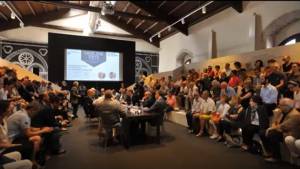
CONCLUDING REMARKS
Prof. Alessandro Crociata had summarized the following bullet points from this fruitful, intensive and learning morning as follow:
- the CCI sector is susceptible to change as a sector and the perimeter and all the taxonomies of such sector is influenced by, for istance, the development of new technologies. So it’s very difficult to classify in a static way this perimeter also because the sub sectors are intertwined with other sectors;
- the taxonomies of the CCI depends strictly on policy imperatives;
- the structure of the CCI macro sector is made by numerous and small companies;
- the gaming sector is growing during the pandemic period as subsector of the CCI Sector;
- pandemic such another internal or external shock, change, priority in policy setting, shifting founds from CCI to another sectors, but nations and policy makers should start to reason in terms of cultural creative ecosystems. An ecosystem led by cultural and creativity is a system in which CCIs are part of a broad socio economic system, and that are able to produce spillover or positive externalities in other dimensions.
- CCI is beneficial for improving world for sustainability for tolerance and inclusiveness, thus, for other several dimension. The CCI can be insert at the center of our policy agenda in which cultural creativity can impact with other several dimensions. So, this is to say that not only a few economic performances is relevant, and moreover, in a period of difficulty only cultural and creative sector seems that could be beneficial to achieve resilience;
- the new season of cohesion policy, is a season with an unprecedent injection of funds;
- the map of CCI sector will unloch the potential of CCi in terms of spillover effects or externalities power;
- each nation should start to set up a sort of National Cultural Observatory to map the CCI system, but coordinated at European level, in order to harmonize data and the Observatories can be used within the country boundaries to boost a sort of capacity building for policymakers.

